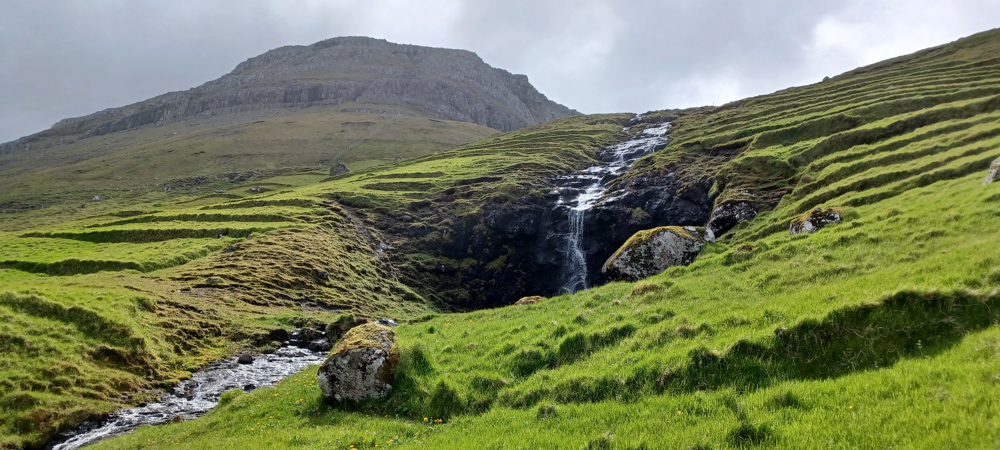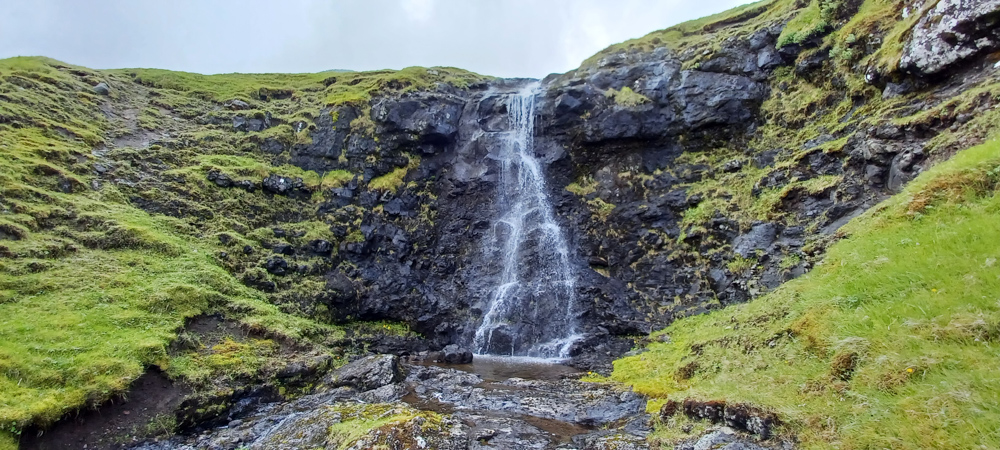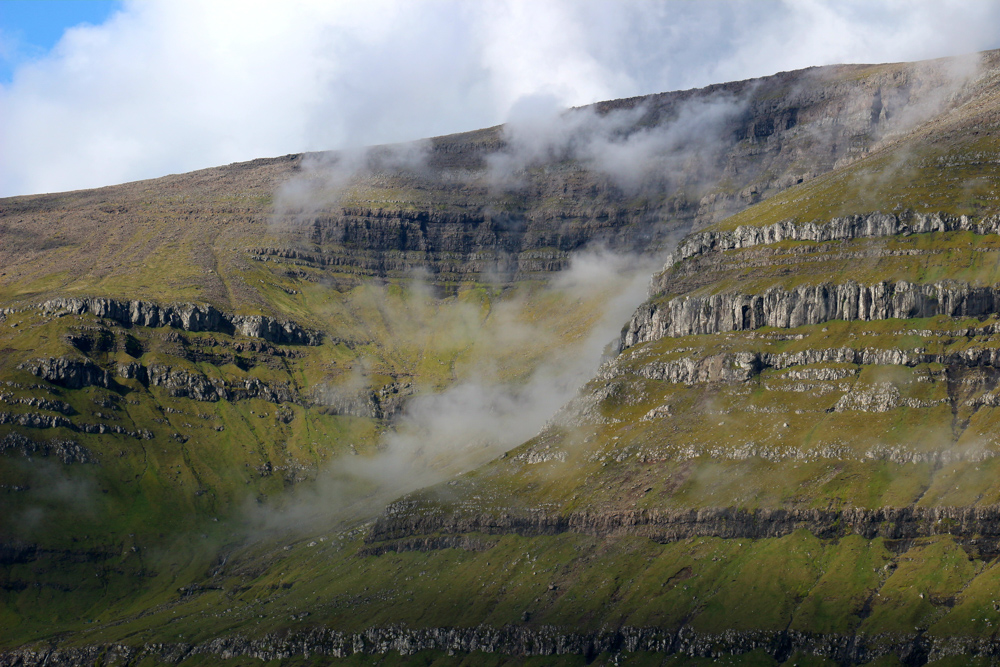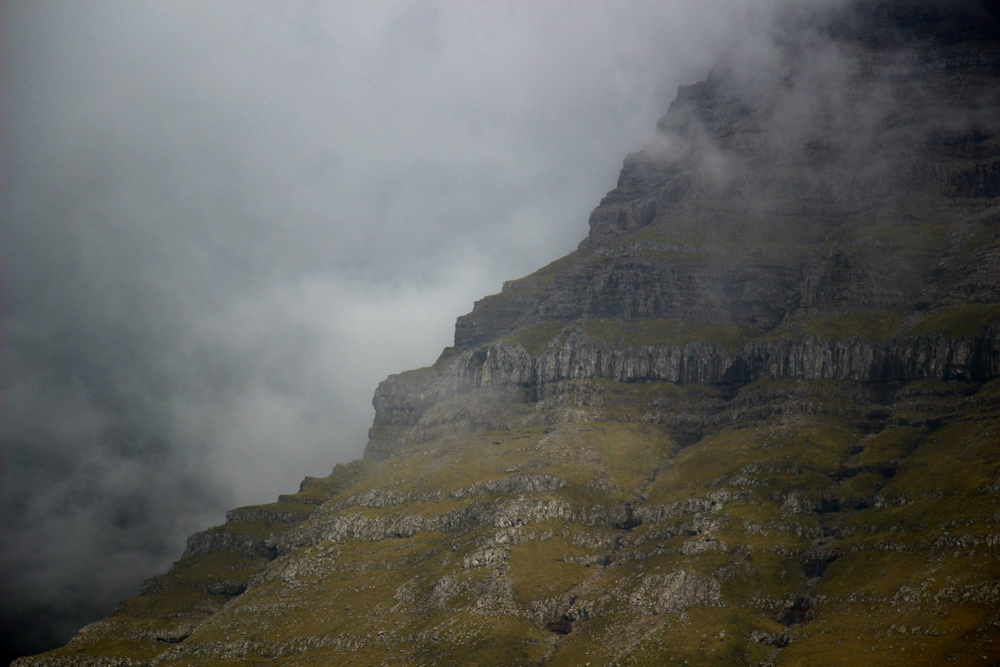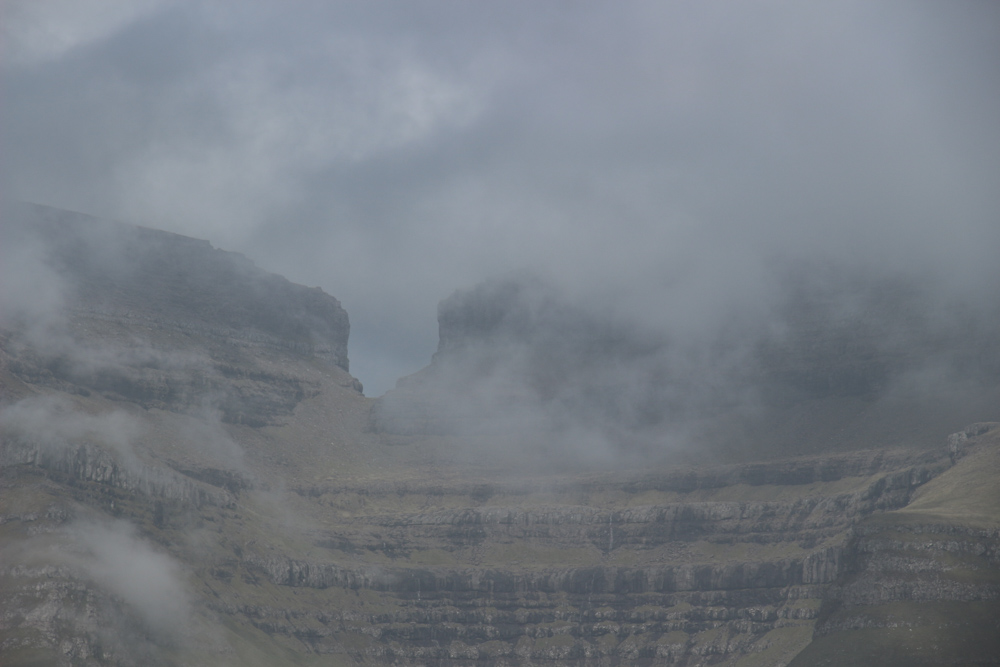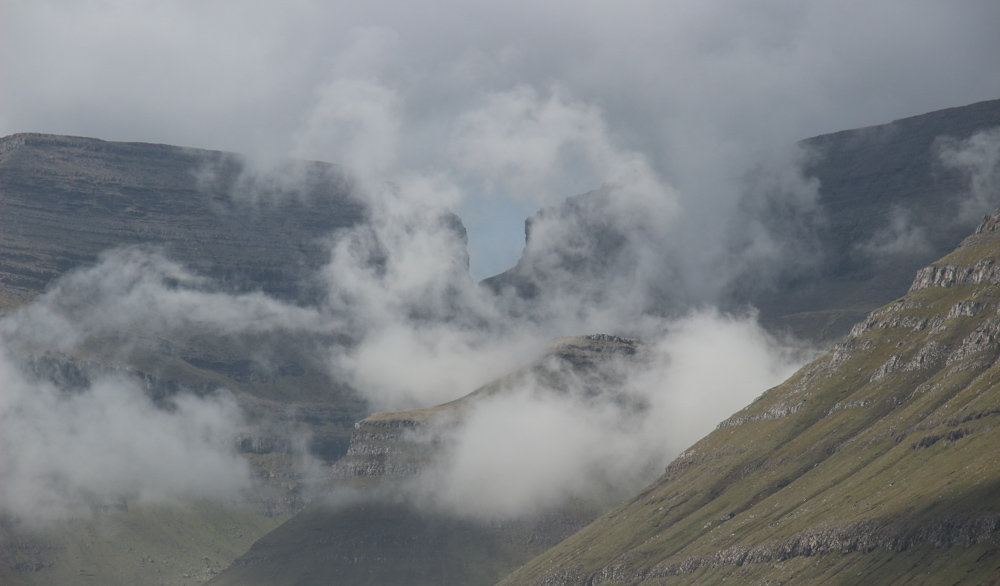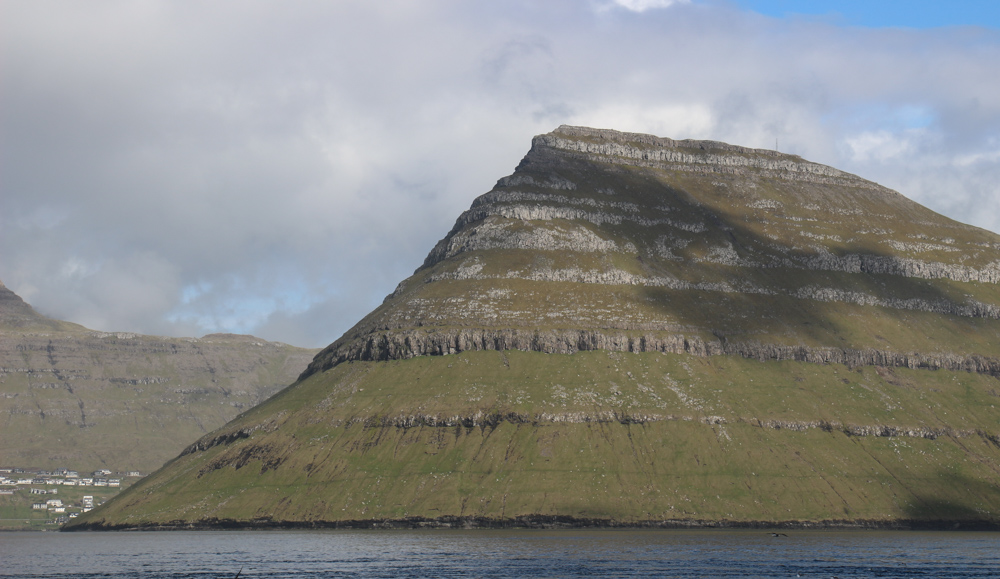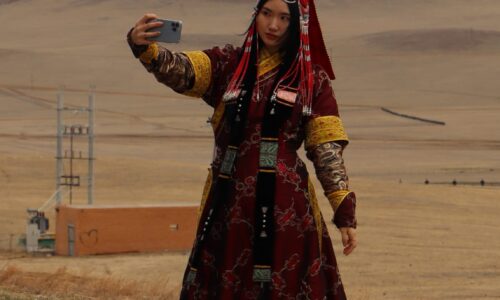Skarð

I was going southwards from the Kallur lighthouse, stopping at Mikladalur to pay respects to Kópakonan selkie statue and to walk through a miniature forest in order to reach the village Husar and in the end Syðradalur, to wait for the ferry to drive me back to Klaksvik.
The village Husar is known to be the oldest village in the archipelago. In this environment a white church stands out, built in 1920. I did a hike around it, found a small waterfall surrounded by beautiful green color.
As you can see, the clouds and the rain were gone, so I had the opportunity to see the surroundings in a clear way and identify them as I was passing them by. During the waiting time I had the chance to pay attention to Kunoy island, on the other side of the fjord.
When I started researching the Faroe islands and creating an itinerary, due to the fact that I have a thing for pattern disruptors and anomalies of all sorts, I was extremely happy when I saw that in the Faroe Islands, usually described as barren and tree-less, lies a small pine tree forest. Only one! One, tiny, in the entire 18 islands! Wow! I hope you get how this sounds to me. This forest lies a short hike away from the village Kunoy on the island with the same name and looked very inviting – I just have to visit it, I was thinking back then, it needs to be seen.
Further reading about the Kunoy island taught me that above the Kunoy village lies a “U” shaped crack in the mountain top line. That crack is also a mountain pass, in faroese called skarð, and it was the path which the inhabitants from a village on the other side of the mountain – Skarð – used to go to church in Kunoy.
With time, the weather cleared up and the fog went away – look at the skarð.
Crossing the skarð nowadays is forbidden without a guide and a good knowledge of climbing for obvious reasons. The slope on the Skarð village side is a literal vertical line. How they did that is beyond me. Now, that’s a devotion, if I ever saw one.
Reading about the Skarð village was one of the main reasons which brought me here. Skarð has been a ghost town/village for over a hundred years now. It was sparsely populated to begin with, but around Christmas in 1913 the only 7 able bodied men went fishing and they never came back. With time, women, elders and children moved to Haraldssund village. Today, Skarð is a ruin in a spectacular location.
I love the moods of the ghost settlements and rarely refuse the opportunity to enter them. By all means, if there is a chance to see one, you can be sure that I will reach it. Driven by this mindset, I have found that there is another way to reach Skarð village. It is a path which is not very often walked on, and it is not known for safety, but it does offer a chance to enter the village while walking through offensively gorgeous nature. So I made the plan to do the long hike from the village Haraldssund along the eastern coastline of Kunoy.
Due to the issues with booking tickets for the helicopter flight (they are limited and get sold out incredibly fast) I have lost a day which was supposed to be spent in Skarð.
Upon arrival, I spoke to a lot of Klaksvikians about this hike, and literally no one recommended it. Not even when the weather is merciful, or at least not without a guide/support. When I was planning to do it, YR forecasted heavy rains during my entire stay in this area; the locals pointed out that after the rain, there are countless waterfalls (even more than usual). It is very steep and slippery. The ever changing weather is an issue of an extreme importance, which’d probably only bring doom. So, no Skarð, not his time. My heart was and still is 💔 but safety first. Always.
Visiting and exploring the village Skarð is the only thing on the entire to-do Faroe list that has not been done. I truly hope that I will return to Klaksvik and do it.
Going back to Klaksvik on the ferry from Syðradalur provided the last look on Kunoy.
I also got the kick in the proverbial behind while on the ferry – I saw that the top of the mountain Klakkur, which was covered with fog since I arrived to Klaksvik, became clear. Clear more than enough for me to climb it, even though I already before walked quite a lot during the day.
I disembarked in the harbor and said to myself, Ahhhh, screw it, let’s go and see how the view from Klakkur’s top looks like. I did not care about the blisters which were complicating my walks for days, and which were becoming more and more painful. I only wanted to reach the top.


